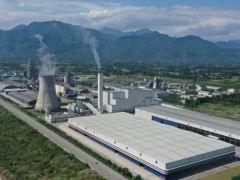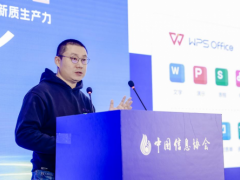据能源之声12月29日消息,Rystad能源公司的研究显示,东南亚将在2022年至2025年之间做出最终投资决定(FID),在新的深水天然气和凝析油开发中占据最大份额。值得注意的是,从2021年到2025年,该地区的深水开发项目预计将花费约250亿美元,高于之前五年的20亿美元。
Rystad 在一份报告中称:“未来四年,全球220亿桶油当量中,东南亚将有近50亿桶油当量获得批准。在预计到2025年达到FID的20个左右深水项目中,前三名将是马来西亚、印度尼西亚和越南的海上项目,其他开发项目将在泰国、缅甸和文莱获得批准。”
在东南亚的资源总量中,印尼将占到60%左右,其次是马来西亚、缅甸、越南和文莱。到2025年,共有20多个深水项目将获得批准。占这些资源近 70% 的前三大深水项目包括雪佛龙在印度尼西亚的 IDD 项目、Inpex 在印度尼西亚的 Abadi 项目和埃克森美孚在越南的 Blue Whale 项目。
这三个顶级项目在获得批准之前都面临着巨大的挑战。因此,最终批准投资的时间表面临风险。
其他正在进行中的项目包括马来西亚的Rosmari-Marjoram项目、文莱的Kelidang Cluster项目、马来西亚的Kebabangan二期项目和Limbayong二期项目以及缅甸的Shwe Yee Htun一期项目。70%以上的项目由大型石油公司和国家石油公司运营。
近海大陆架最终投资决定
“在2022-2025年预计将被批准的近海大陆架资源方面,东南亚是仅次于中东的第二大地区,拥有超过35亿桶油当量的FID资源。马来西亚将占该份额的近50%,其次是印度尼西亚和越南,国家石油公司是这些项目的主要运营商。PTTEP在马来西亚的Lang Lebah项目是其中最大的项目,为FID提供了超过5.75亿桶的资源,紧随其后的是越南国家石油公司在越南的B区块天然气项目,其储量为5.6亿桶。其他主要项目包括马来西亚SapuraOMV的B14项目、马来西亚国家石油公司的K5和Kasawari二期项目、印尼Conrad Petroleum的Mako项目以及英国石油公司的Vorwata项目。雪佛龙在泰国的乌汶油田也在准备获批,这是该国自2009年以来第一次大规模FID投资。”Rystad 报道。
重大的挑战
东南亚的海上开发面临着巨大的挑战,其中包括与一些主要油田开发相关的高二氧化碳含量。Rystad补充说,到2025年,这些投资决策将带来超过45亿桶油当量的酸性气体和高二氧化碳含量。事实上,许多运营商,如马来西亚国家石油公司、Inpex和英国石油公司,都在考虑将碳捕获、利用和封存(CCUS)添加到他们的开发中,以帮助减少排放足迹。
列出的一些顶级项目面临的另一个潜在障碍是潜在的合并协议的进展。马来西亚和文莱的协议是在2021年初签署的,然而,Kelidang集群的开发仍在筹备中,尚未取得任何进展。
此外,在东南亚,许多待批准的项目也在出售,因为运营商要么寻求合作,要么将资产出售给另一家公司进行开发。该地区超过35亿桶石油资源属于这一类,这意味着FID时间表可能面临风险。
壳牌正寻求出售inpex在印尼Masela区块运营的Abadi项目35%的股份。雪佛龙正在等待将其在印尼IDD项目中62%的股份出售给埃尼集团。而埃克森美孚正在为其在越南的Blue Whale项目寻找买家。
尽管存在这些障碍,但这些新开发项目的额外供应对于东南亚国家抵消预期的国内天然气产量大幅下降和对进口依赖增加的影响至关重要。
Rystad估计,由于即将批准的深水开发项目,东南亚的深水天然气和凝析油产量预计将在2030年翻一番,达到约50亿立方英尺/天,而目前的产量约为25亿立方英尺/天。
从2021年到2030年,该地区生产油田的大陆架产量将下降约60%。根据Rystad的数据,到2030年,新的大陆架开发预计将增加约45亿立方英尺/天的新产量。
裘寅 编译自 能源之声
原文如下:
Southeast Asia to dominate global deepwater gas activity with $25bn spend
Southeast Asia will lead other regions in having the largest share of new deepwater gas and condensate developments taking a final investment decision (FID) between 2022 and 2025, research from Rystad Energy shows. Significantly, around $25 billion is expected to be spent on greenfield deepwater developments in the region from 2021-2025, up from $2 billion over the prior five-year term.
“Nearly 5 billion barrels of oil equivalent (boe) will be sanctioned in Southeast Asia out of a total 22 billion boe globally in the coming four years. Of the 20 or so deepwater projects expected to reach FID through 2025, the top three will be offshore Malaysia, Indonesia, and Vietnam with other developments set to be sanctioned in Thailand, Myanmar, and Brunei,” Rystad said in a report.
“Of Southeast Asia’s total, Indonesia will be responsible for around 60% of these resources followed by Malaysia, Myanmar, Vietnam, and Brunei. A total of over 20 deepwater projects are due for sanctioning by 2025. The top three deepwater projects responsible for nearly 70% of these resources include Chevron’s IDD project in Indonesia, Inpex’s Abadi project in Indonesia and ExxonMobil’s Blue Whale project in Vietnam,” reported the energy consultancy.
Although all three of the top projects face significant challenges that need to be overcome before they can be sanctioned. As a result, timelines for final investment approval are at risk.
“Other projects in the pipeline include Rosmari-Marjoram projects in Malaysia, Kelidang Cluster in Brunei, Kebabangan Phase 2 and Limbayong Phase 2 in Malaysia and Shwe Yee Htun Phase 1 in Myanmar. The majors and internationally focused NOCs operate over 70% of these projects,” said Rystad.
Offshore shelf FIDs
“In terms of offshore shelf resources expected to be sanctioned from 2022-25, Southeast Asia is second to the Middle East with over 3.5 billion boe of resources set for FID. Malaysia will be responsible for nearly 50% of this share followed by Indonesia and Vietnam, with the NOCs the major operators of these projects. PTTEP’s Lang Lebah project in Malaysia is the largest in the list with over 575 million boe of resources set for FID, followed by PetroVietnam’s 560 million boe Block B gas project in Vietnam. Other major projects include the SapuraOMV’s B14 project in Malaysia, Petronas’ K5 and Kasawari Phase 2 projects in Malaysia, Conrad Petroleum’s Mako project in Indonesia and BP’s Vorwata in Indonesia.Chevron’s Ubon in Thailand is also in the pipeline for sanctioning, the first sizeable FID for the nation since 2009,” reported Rystad.
Significant challenges
Offshore developments in Southeast Asia face significant challenges including the high carbon dioxide (CO2) content associated with some of the major field developments. Over 4.5 billion boe of resources with sour gas and high CO2 content are due for FID by 2025, added Rystad. Indeed, many operators, such as Petronas, Inpex, and BP, are considering adding carbon capture, utilisation, and storage (CCUS) to their developments to help reduce their emissions footprint.
“Another potential hurdle for some of the top projects listed is progress on potential unitisation agreements. The Malaysia-Brunei agreement was signed in early 2021, however, the development of the Kelidang cluster is still in the pipeline with little progress yet made,” said Rystad.
Geopolitical tensions could also thwart developments with China staking claim to maritime areas offshore Indonesia, Vietnam and Malaysia, where oil and gas developments are planned.
Moreover, “in Southeast Asia many of the projects up for sanctioning are also for sale as operators look to either partner up or sell the assets to another company for development. Over 3.5 billion boe of the region’s resources fall into this category, meaning FID timetables could be at risk,” cautioned Rystad.
Shell is seeking to sell its 35% share of the Inpex-operated Abadi project in Indonesia’s Masela Block. Chevron is awaiting the sale of its 62% stake in the IDD project, also in Indonesia, to Eni. While ExxonMobil is seeking buyers for its Blue Whale project in Vietnam.
Despite the hurdles, additional supply from these new developments will be crucial for Southeast Asian countries to offset a significant expected fall in domestic gas production and increased dependence on imports.
As a result of set-to-be sanctioned deepwater developments, deepwater gas and condensate production in Southeast Asia is predicted to double to around 5 billion cubic feet per day (cf/d) in 2030 compared to current output of about 2.5 billion cf/d, estimates Rystad.
Shelf production in the region from producing fields is set to decline by around 60% from 2021 to 2030. New shelf developments are expected to add around 4.5 billion cf/d of new production by 2030, according to Rystad.
免责声明:本网转载自其它媒体的文章,目的在于弘扬石化精神,传递更多石化信息,并不代表本网赞同其观点和对其真实性负责,在此我们谨向原作者和原媒体致以敬意。如果您认为本站文章侵犯了您的版权,请与我们联系,我们将第一时间删除。







